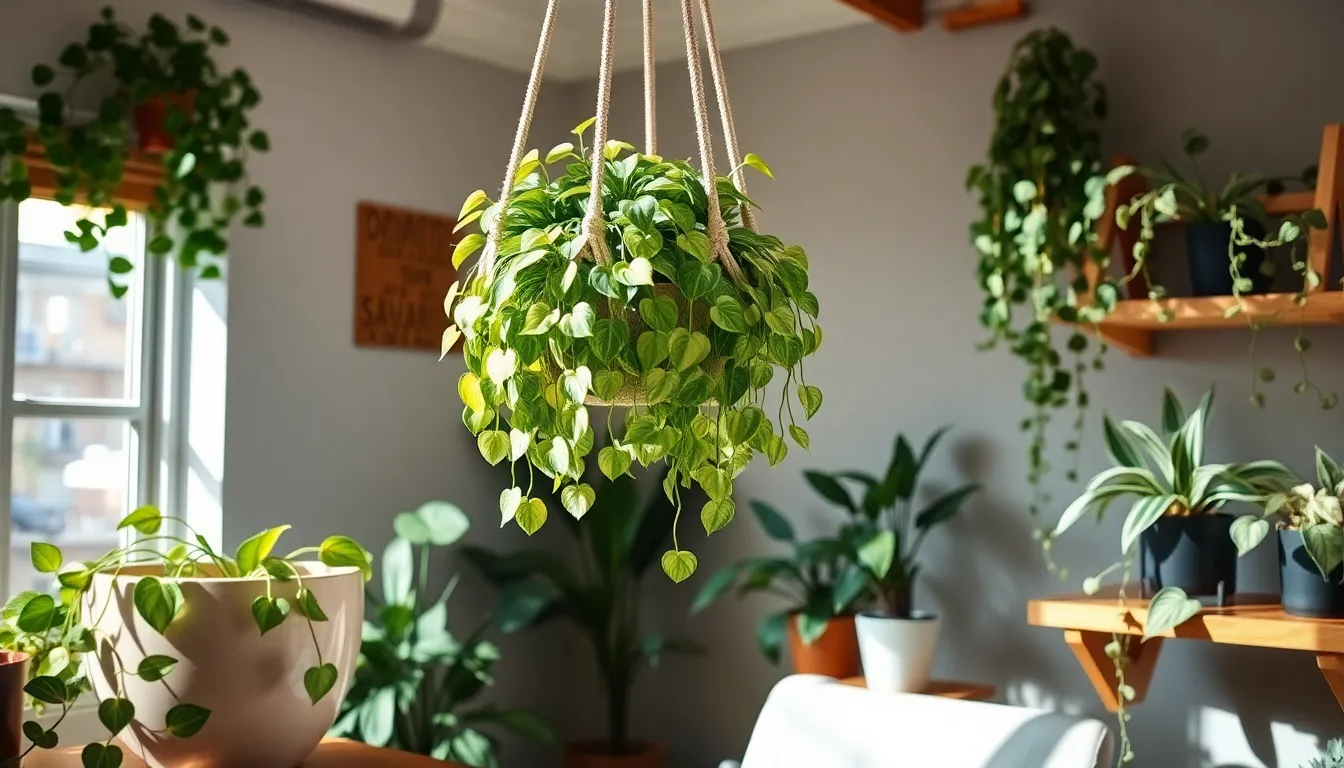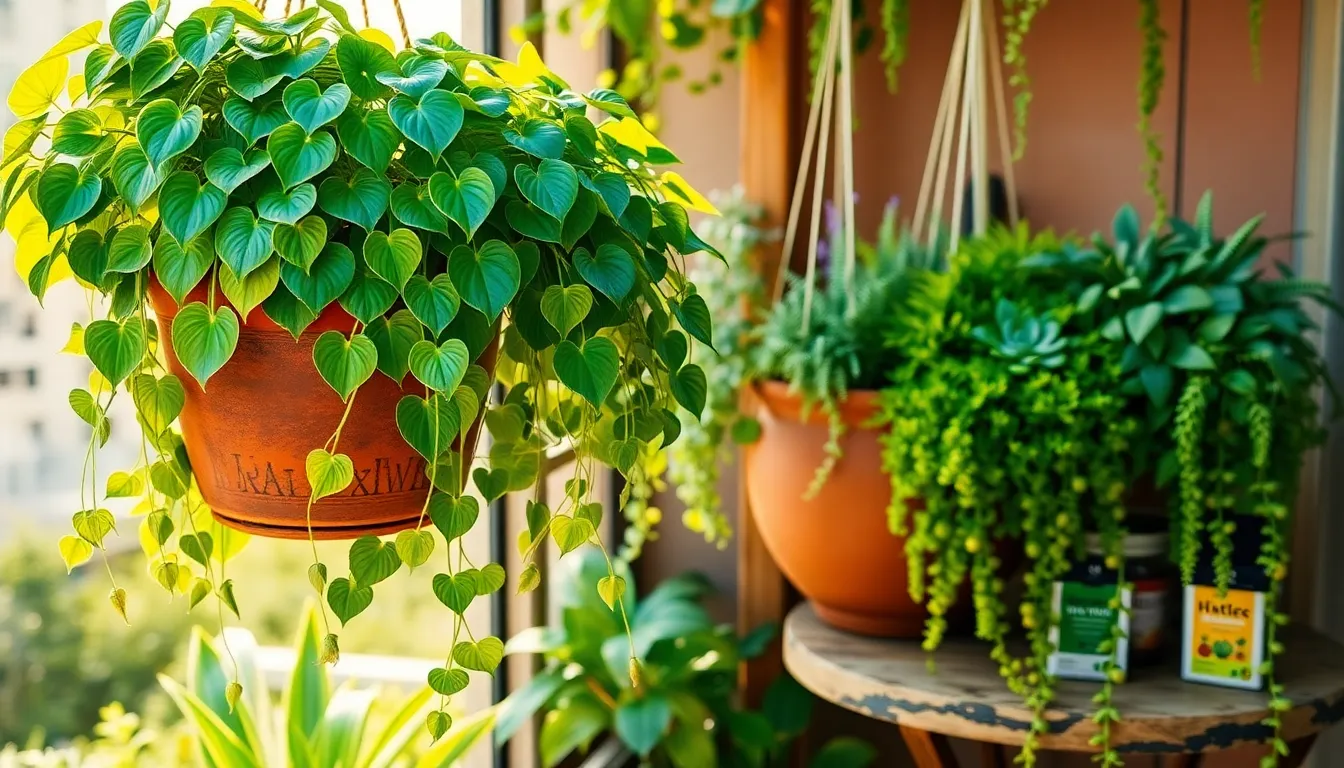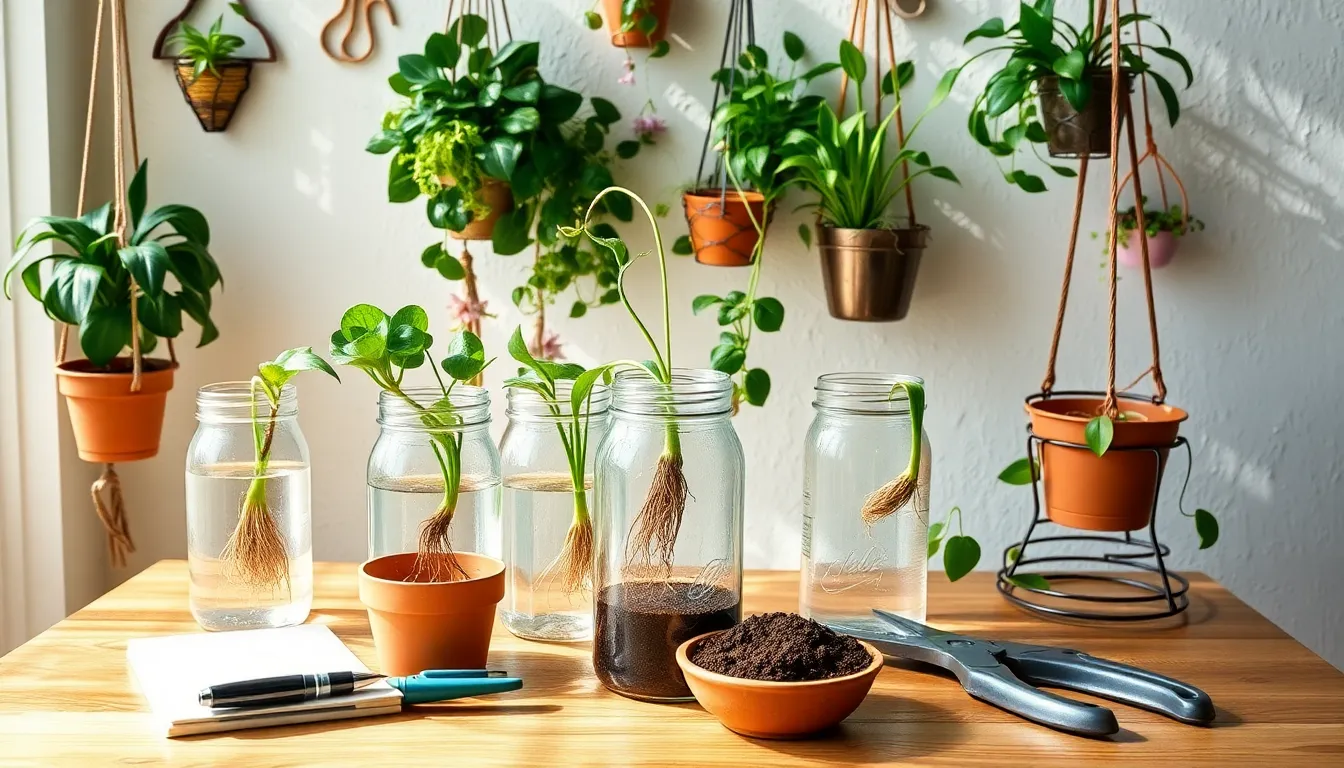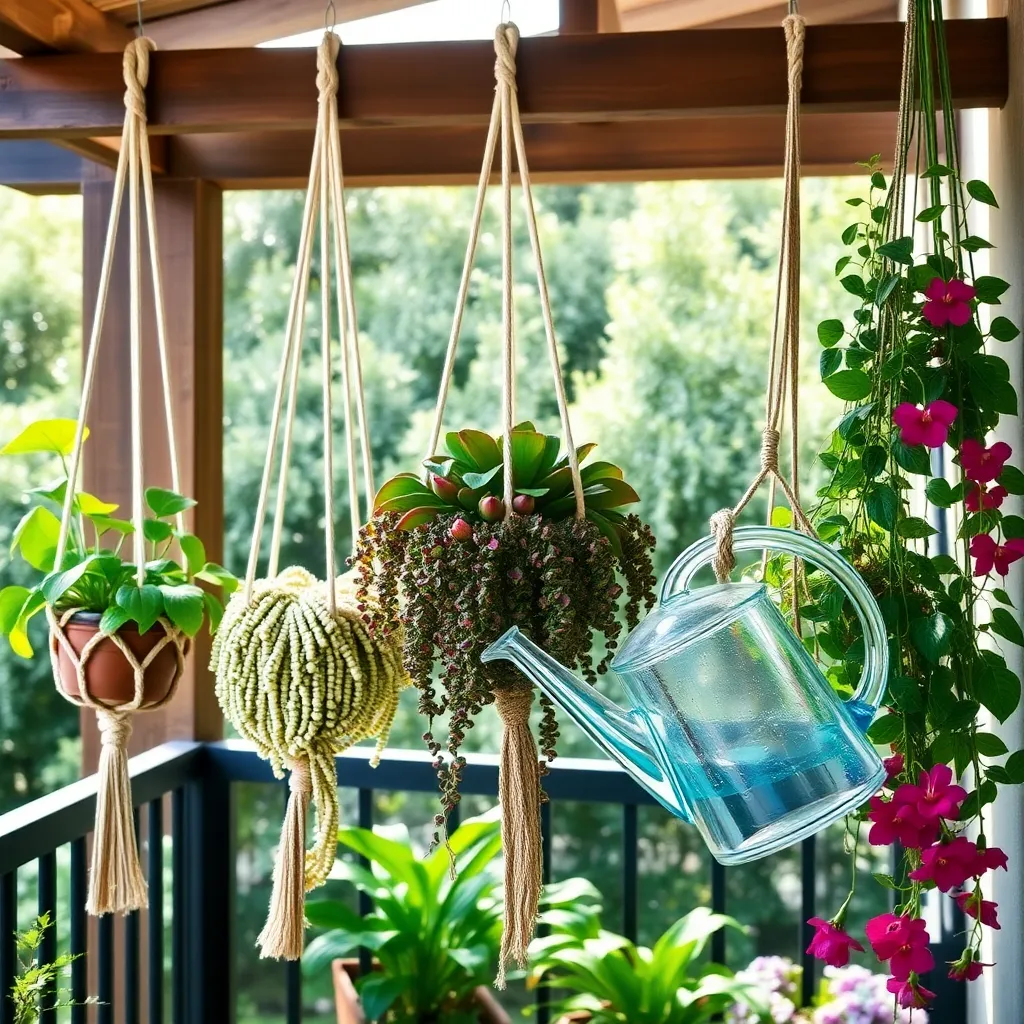In the vibrant world of gardening, hanging plants have taken the spotlight, offering a fresh perspective on greening both indoor and outdoor spaces. As you peruse Pinterest’s treasure trove of leafy wonders, you’ll discover that these suspended beauties not only save space but also add a touch of elegance and whimsy to any setting. Whether you’re a novice gardener just starting your plant journey or a seasoned green thumb seeking the latest trends, hanging plants provide an enchanting way to elevate your gardening game. They thrive in various conditions, making them accessible to anyone willing to embrace a little vertical creativity.
With the popularity of hanging plants soaring, it’s no wonder they’re among the most pinned items on Pinterest. This article dives into 16 trending choices that are captivating plant enthusiasts worldwide, offering insights into their unique characteristics and care needs. You’ll learn how these plants can transform your living space, offering soothing greenery that purifies the air and brings tranquility to your home. From the cascading tendrils of the string-of-pearls to the lush vitality of ferns, we will guide you through selecting the perfect hanging companions for your environment.
Our exploration is designed to inspire and equip you with practical tips, ensuring that your hanging plants not only survive but thrive. We’ll discuss light requirements, watering techniques, and creative ways to display your plants, making sure you feel confident every step of the way. Whether you’re looking to adorn a cozy corner or create a stunning centerpiece, these trending hanging plants are the perfect starting point. So, get ready to elevate your gardening skills and let your imagination soar to new heights with your very own suspended garden haven.
Discover Pinterest’s Plant Trends
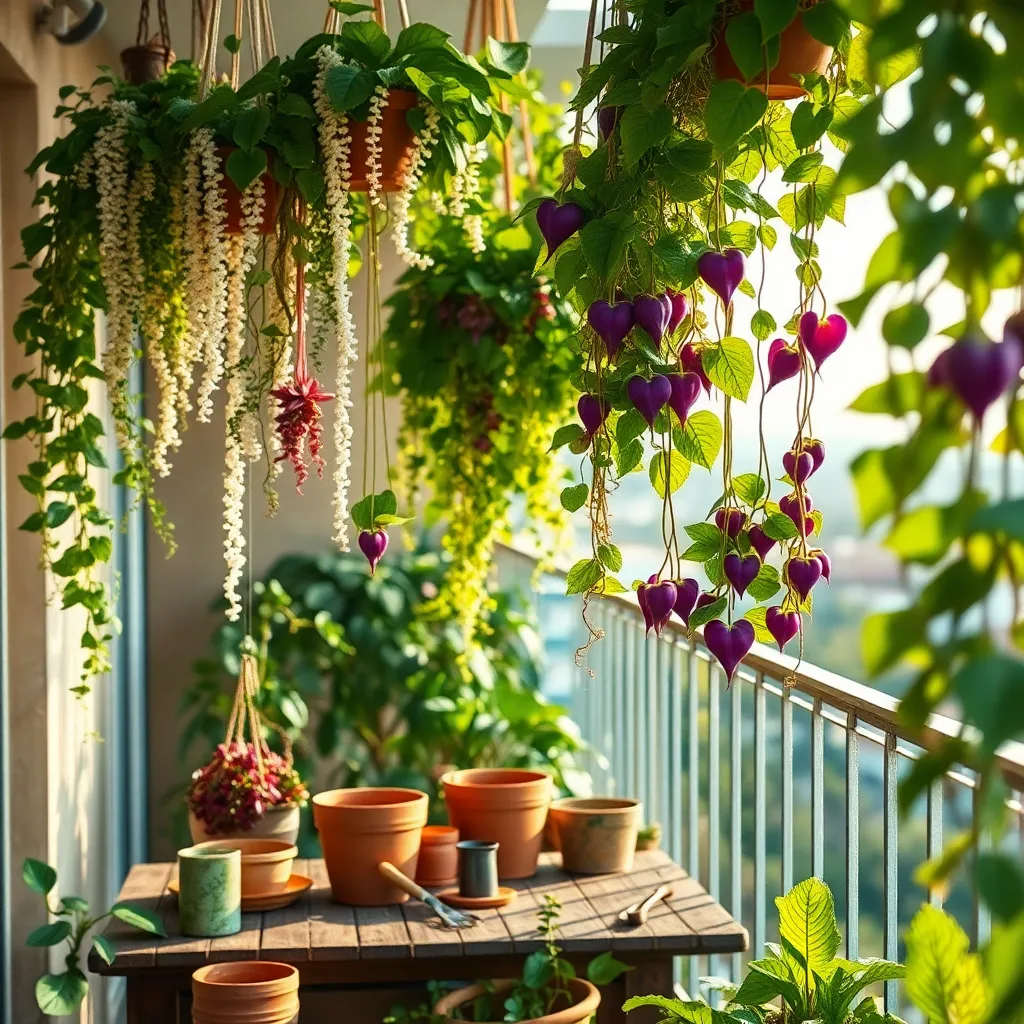
Hanging plants have captured the imagination of Pinterest users, offering a way to bring greenery into homes without taking up floor space. Among the trending options, the String of Pearls stands out for its unique trailing appearance. To cultivate this plant successfully, ensure it receives bright, indirect light and uses a well-draining cactus soil mix. Overwatering is a common mistake; allow the soil to dry out completely between waterings to prevent root rot.
Another favorite is the Spider Plant, known for its resilience and air-purifying qualities. This plant thrives in a variety of lighting conditions, making it ideal for beginners who may not have the perfect spot. For optimal growth, water the Spider Plant when the top inch of soil feels dry but avoid letting it sit in water to prevent root issues. Additionally, consider an occasional wipe-down of the leaves to keep them dust-free and healthy.
For those looking to add a tropical flair, the Boston Fern is a popular choice found on many Pinterest boards. This plant requires high humidity to flourish, so regular misting or a pebble tray can help maintain the necessary moisture levels. Place your Boston Fern in a location with indirect sunlight and keep the soil consistently moist, but not soggy. Advanced gardeners might consider using a diluted liquid fertilizer during the growing season to encourage lush growth.
Lastly, the Pothos plant is a versatile option that continues to trend thanks to its adaptability and ease of care. It can thrive in low-light conditions, making it a perfect fit for less sunny spaces where other plants might struggle. Ensure the pot has adequate drainage and water when the soil feels dry to the touch. For those with an artistic flair, training the vines around a support or allowing them to cascade freely can create stunning visual effects.
Why Hanging Plants Are Popular
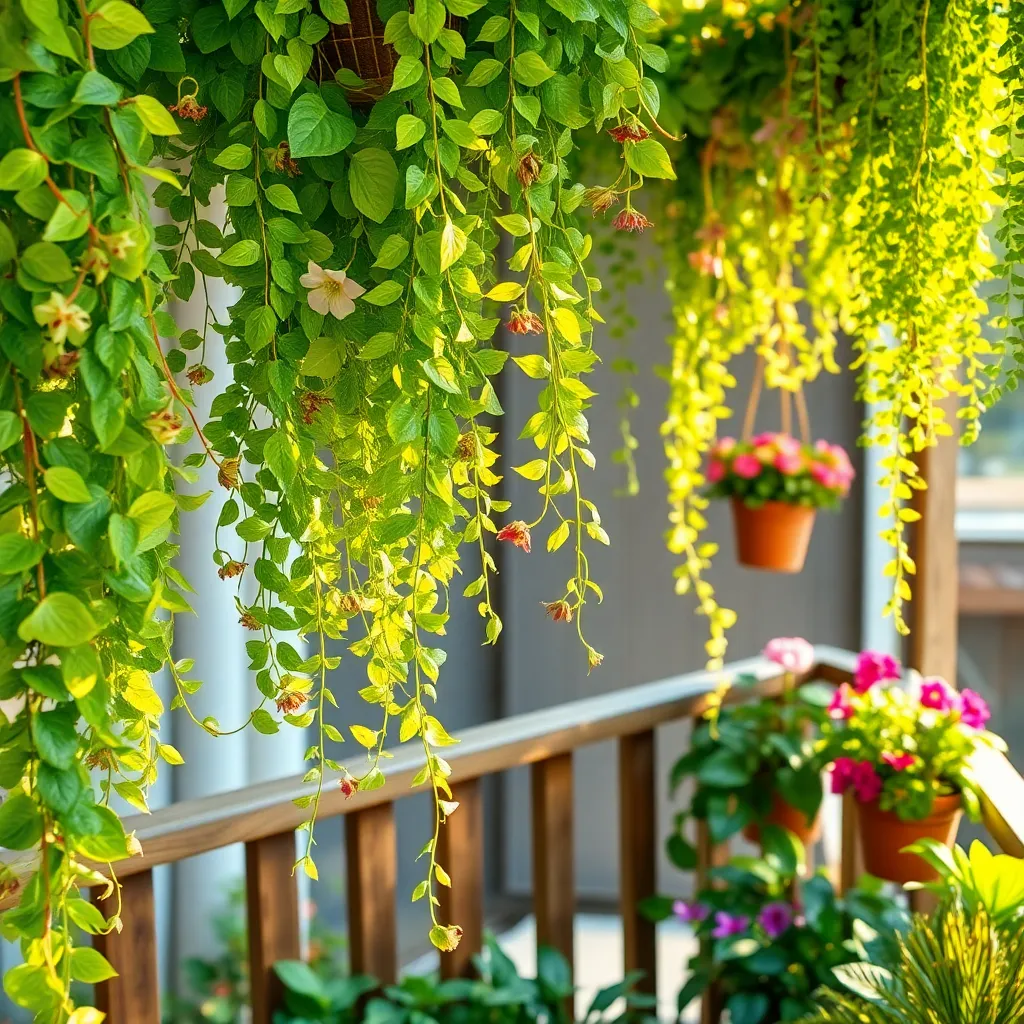
Hanging plants have soared in popularity due to their ability to maximize space, making them ideal for both small apartments and expansive homes. They offer a versatile way to bring greenery into any environment, whether it be a cozy reading nook or an outdoor patio, without requiring much room on the floor or shelves.
One of the most appealing features of hanging plants is their ability to thrive in a variety of lighting conditions, from bright indirect light to shaded corners. Beginners can start with hardy options like the Spider Plant or Pothos, which are forgiving and adapt well to indoor conditions.
Experienced gardeners might experiment with more delicate species, such as String of Pearls or Boston Ferns, which demand more specific care. These plants often prefer a well-draining soil mix, such as one part potting soil, one part perlite, and one part orchid bark, to ensure they don’t sit in water.
Watering requirements can vary, but a general rule is to water when the top inch of soil feels dry; overwatering is a common mistake. For those who live in drier climates, increasing humidity around the plant through misting or using a pebble tray can promote healthier growth.
Top Hanging Plant: String of Pearls
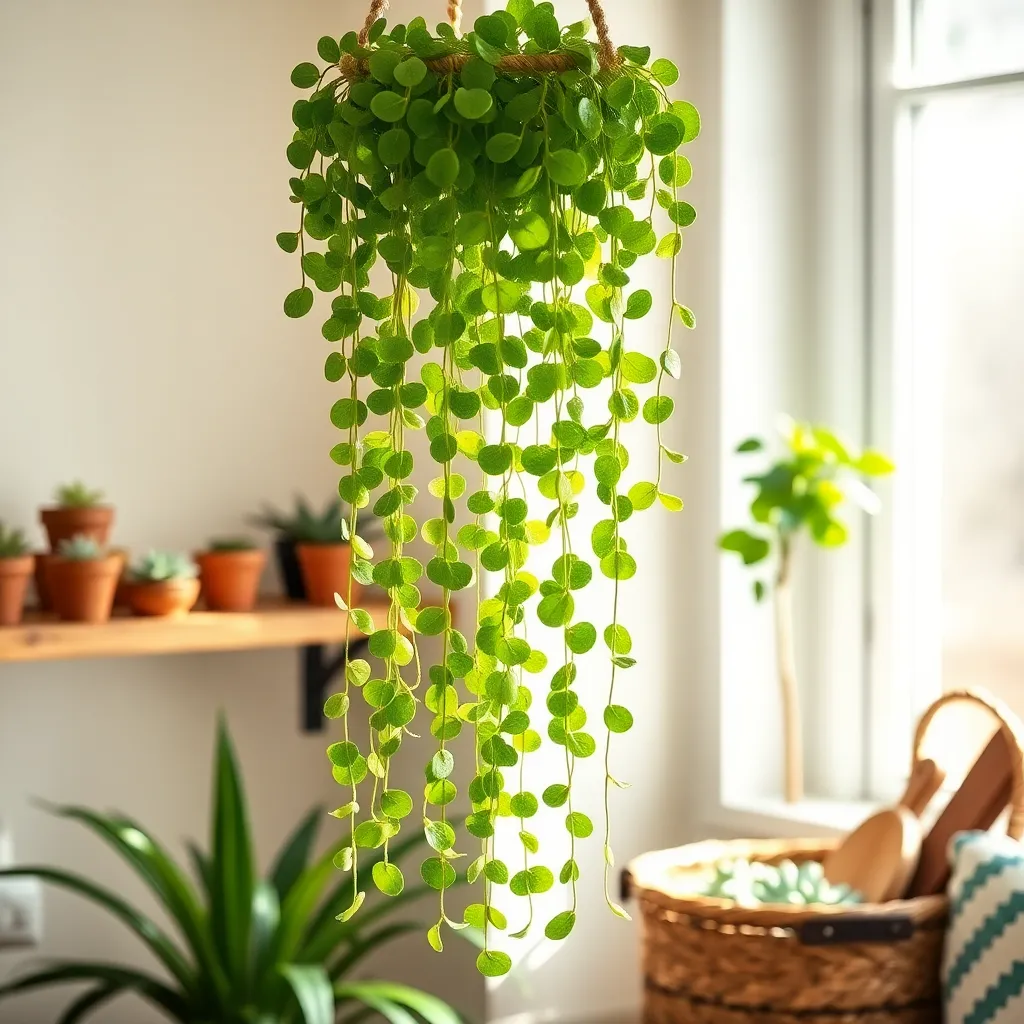
The String of Pearls (Senecio rowleyanus) is a stunning hanging plant that stands out for its unique, bead-like leaves. This succulent is perfect for brightening up any indoor space, thanks to its cascading strands that can grow several feet long.
To ensure your String of Pearls thrives, place it in a spot that receives bright, indirect light. Direct sunlight can scorch its delicate leaves, while too little light may cause the plant to become leggy.
Watering is crucial for this plant, as it prefers to dry out completely between waterings. Use a well-draining soil mix, such as a cactus or succulent blend, to prevent root rot, which can occur if the plant sits in waterlogged soil.
For those looking to encourage fuller growth, consider pruning the plant to promote branching. Simply trim the strands and include the cuttings in the soil to propagate new plants, making String of Pearls an excellent choice for expanding your indoor garden.
Boston Fern: A Lush Favorite

Boston Ferns are a classic choice for hanging baskets, bringing a touch of lush greenery into any space. Known for their feathery fronds, these ferns thrive in humid conditions and indirect light, making them perfect for bathrooms or shaded patios.
To keep your Boston Fern healthy, it’s crucial to maintain consistent moisture levels in the soil. Water them when the top inch of soil feels dry, ensuring that the pot has good drainage to prevent root rot.
Using a well-draining potting mix rich in organic matter will support the fern’s growth. Consider adding peat moss or coco coir to your mix, as these materials help retain moisture while allowing excess water to escape.
For those looking to give their Boston Fern an extra boost, misting the plant regularly can mimic the humidity of its native environment. A monthly feeding with a balanced liquid fertilizer diluted to half strength will also support robust growth and vibrant foliage.
Tillandsia: Air Plants in Vogue
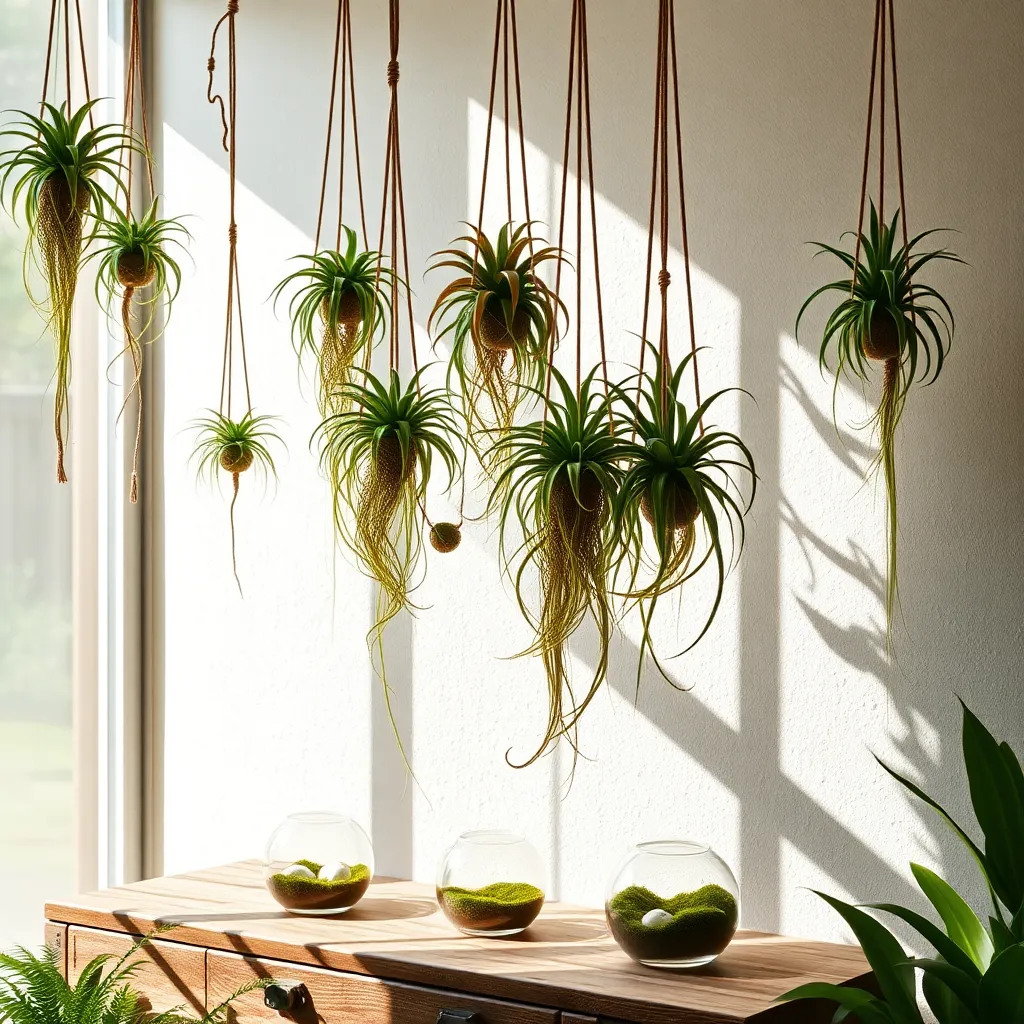
Tillandsia, commonly known as air plants, are capturing the attention of gardeners everywhere. These unique plants thrive without soil, making them perfect for hanging displays and creative arrangements.
To keep your Tillandsia healthy, make sure they receive bright, indirect light. Direct sunlight can scorch their leaves, so position them near a window that filters the sunlight.
Watering air plants is simple but essential for their survival. Mist them thoroughly once a week, ensuring they dry completely within four hours to prevent rot, or soak them in water for 20-30 minutes every two weeks for a deeper hydration.
Advanced gardeners can experiment with cyclical fertilization to enhance growth. Use a bromeliad or orchid fertilizer diluted to quarter strength every month, which can be applied during your regular misting routine.
Pothos Varieties and Care Tips

Pothos, also known as Devil’s Ivy, are beloved for their adaptability and vibrant foliage. These trailing plants thrive in low light, making them perfect for hanging baskets indoors.
Among its varieties, the Golden Pothos is popular for its heart-shaped leaves with yellow variegation. The Marble Queen offers stunning white marbling that adds a touch of elegance and is perfect for brightening up any room.
When caring for Pothos, ensure they are planted in well-draining soil to prevent root rot. A mix of regular potting soil with a bit of perlite or orchid bark works wonders for these resilient plants.
Watering is straightforward: allow the top inch of soil to dry out before watering thoroughly. In terms of feeding, a balanced liquid fertilizer every four to six weeks during the growing season will keep your Pothos lush and vibrant.
For advanced care, consider propagating Pothos through stem cuttings. Simply place cuttings in water until roots develop, then plant them back in soil to expand your collection effortlessly.
Spider Plant: A Timeless Classic
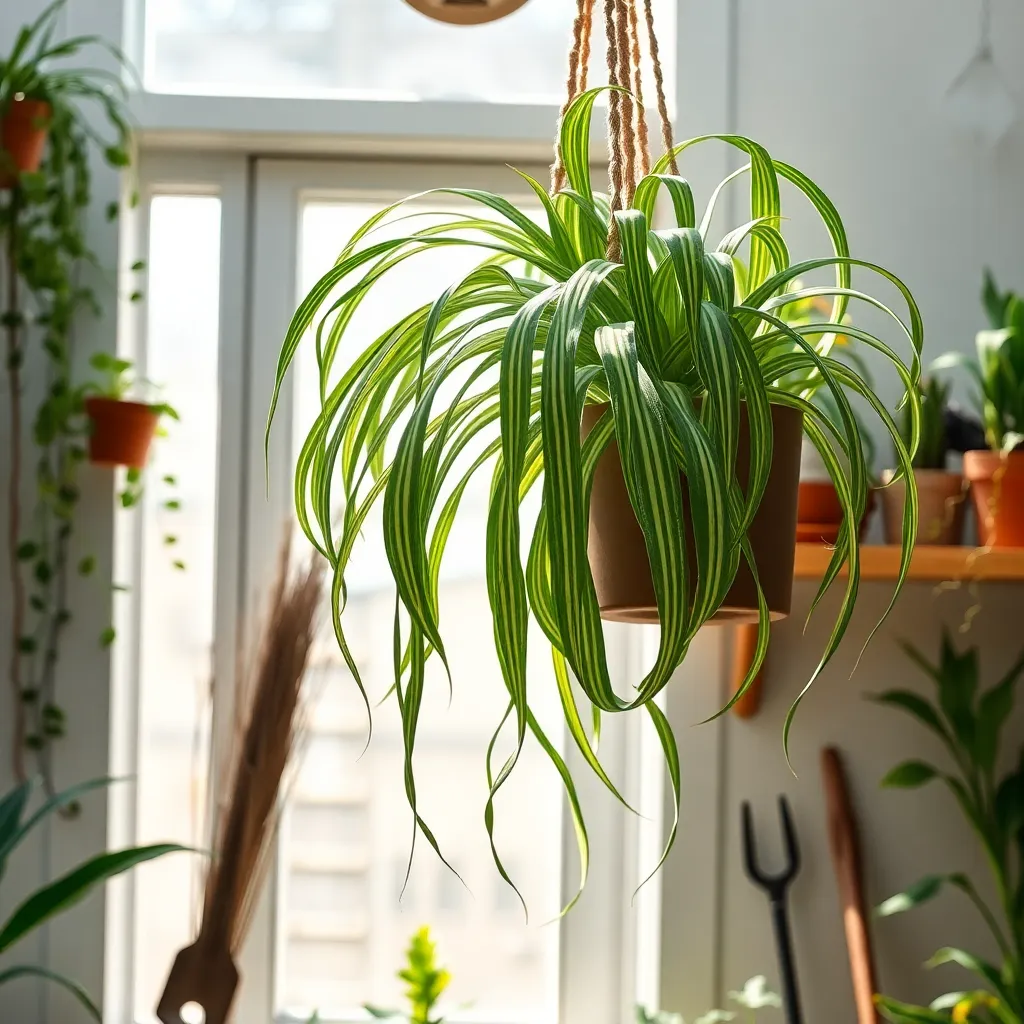
Spider plants, with their cascading green and white striped leaves, are a beloved choice for hanging baskets. Known for their resilience, these plants thrive in a variety of conditions, making them perfect for both beginners and seasoned gardeners.
When planting a spider plant, opt for a well-draining potting mix to prevent root rot. Aim to use a soil composed of peat, pine bark, and perlite, which provides ample drainage and aeration.
These plants prefer bright, indirect light, although they can tolerate lower light conditions. Water them once the top inch of soil feels dry, generally about once a week, adjusting based on humidity and temperature.
For those looking to propagate, spider plants offer an easy opportunity with their “pups” or offsets. Simply place the offsets in water or soil, and they will quickly develop roots, allowing you to expand your plant collection effortlessly.
Heartleaf Philodendron’s Charm
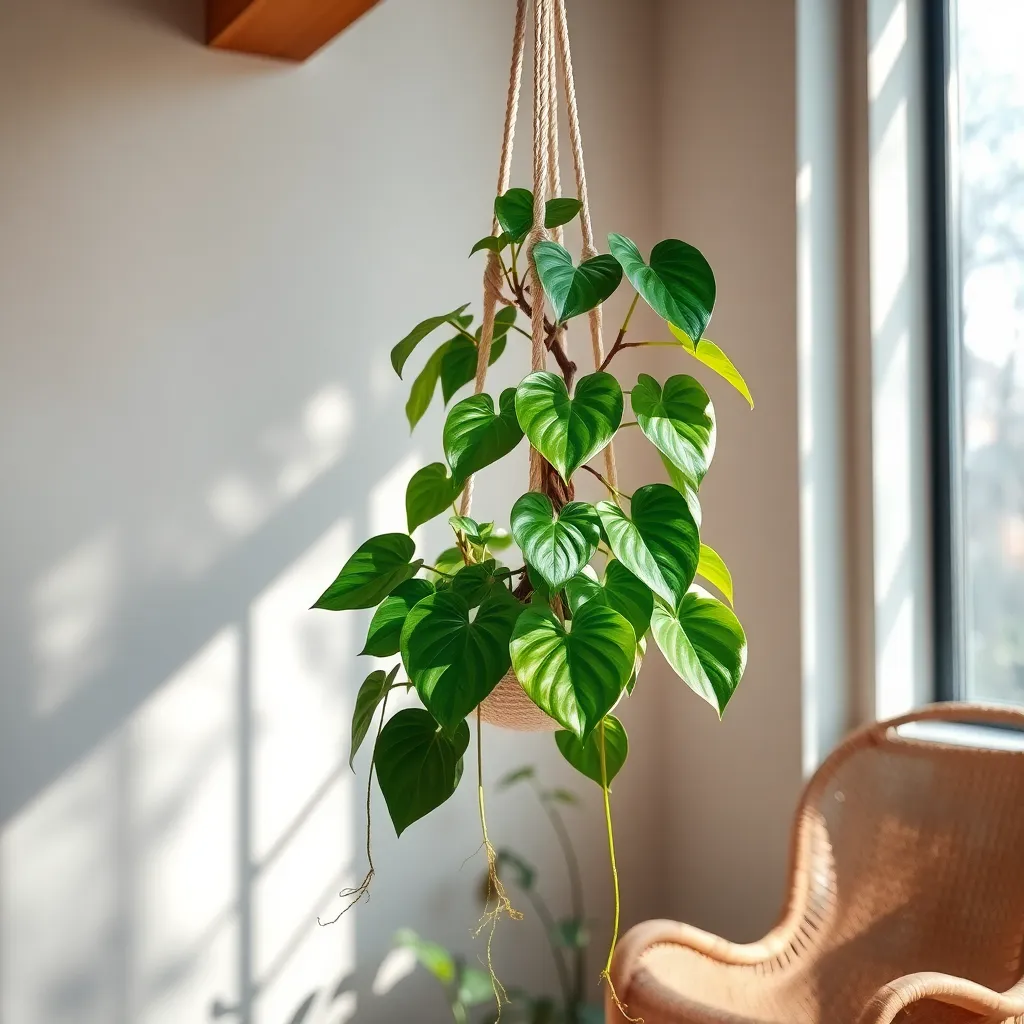
The Heartleaf Philodendron is a beloved choice for many gardeners due to its lush, trailing foliage. Known for its resilience, it thrives in a variety of indoor conditions, making it perfect for beginners.
To ensure optimal growth, place your Philodendron in bright, indirect light. Though it can tolerate lower light levels, bright light will encourage more vigorous growth and larger leaves.
Watering should be done when the top inch of soil is dry to the touch, typically every 1-2 weeks. Overwatering can lead to root rot, so it’s essential to ensure that the pot has good drainage.
For healthy growth, use a well-draining potting mix rich in organic matter. A mix containing peat moss, perlite, and pine bark is ideal, providing both moisture retention and adequate aeration.
Advanced gardeners can propagate their Heartleaf Philodendron through stem cuttings. Simply cut a section with at least two nodes, place it in water or moist soil, and watch roots develop in a few weeks.
Trailing Ivy: A Classic Choice
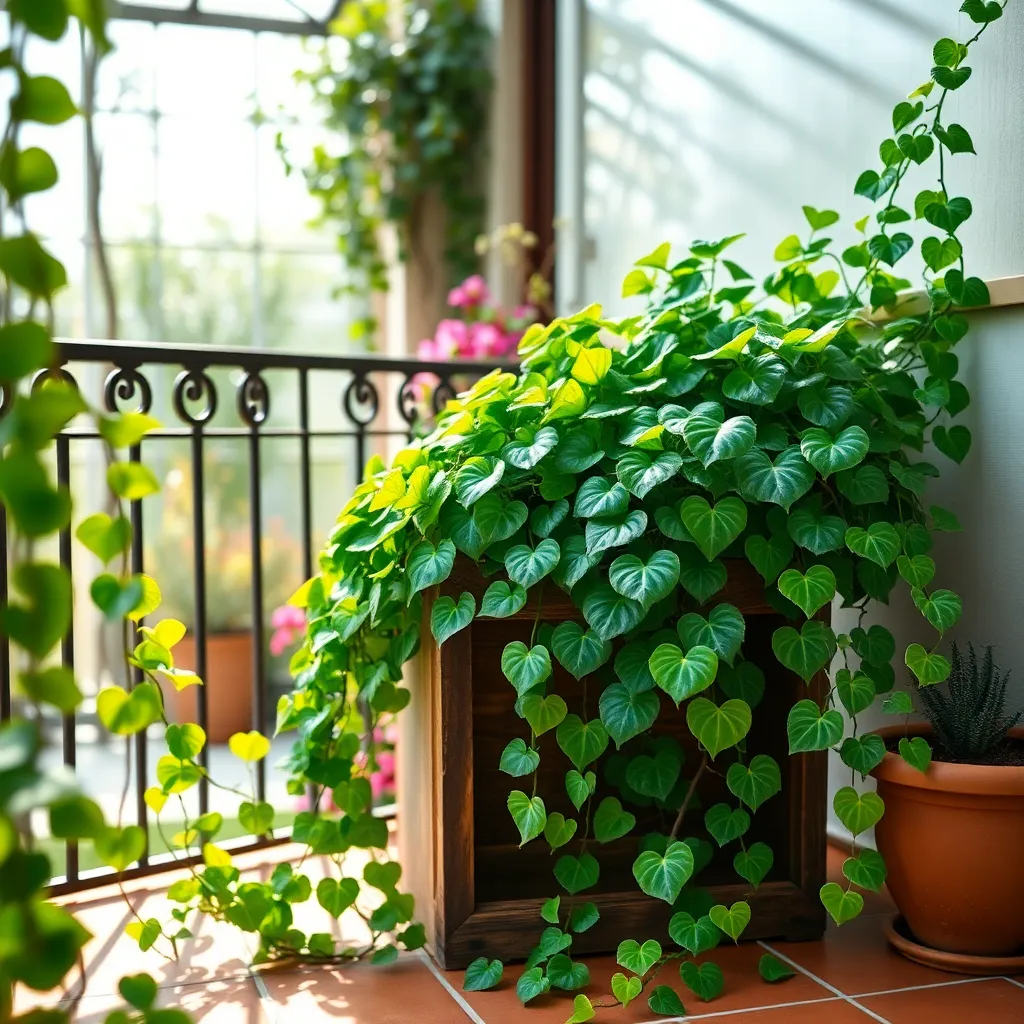
Trailing Ivy is a classic choice that continues to captivate gardeners with its lush, cascading vines. Known for its adaptability, this plant thrives both indoors and outdoors, making it a versatile addition to any space.
To keep your Trailing Ivy healthy, ensure it receives indirect sunlight, as too much direct light can scorch its leaves. When planting, use a well-draining potting mix; a blend designed for houseplants or one that includes peat moss can work wonders.
Water your ivy when the top inch of soil feels dry, but be careful not to overwater, as this can lead to root rot. In the winter, you can reduce watering frequency, allowing the soil to dry out slightly more between waterings.
For those looking to take their ivy care to the next level, consider occasional trimming to maintain its shape and encourage bushier growth. Additionally, feeding your ivy with a balanced, water-soluble fertilizer every month during the growing season can promote vibrant foliage.
Hoya Plants: Wax Plant Wonders
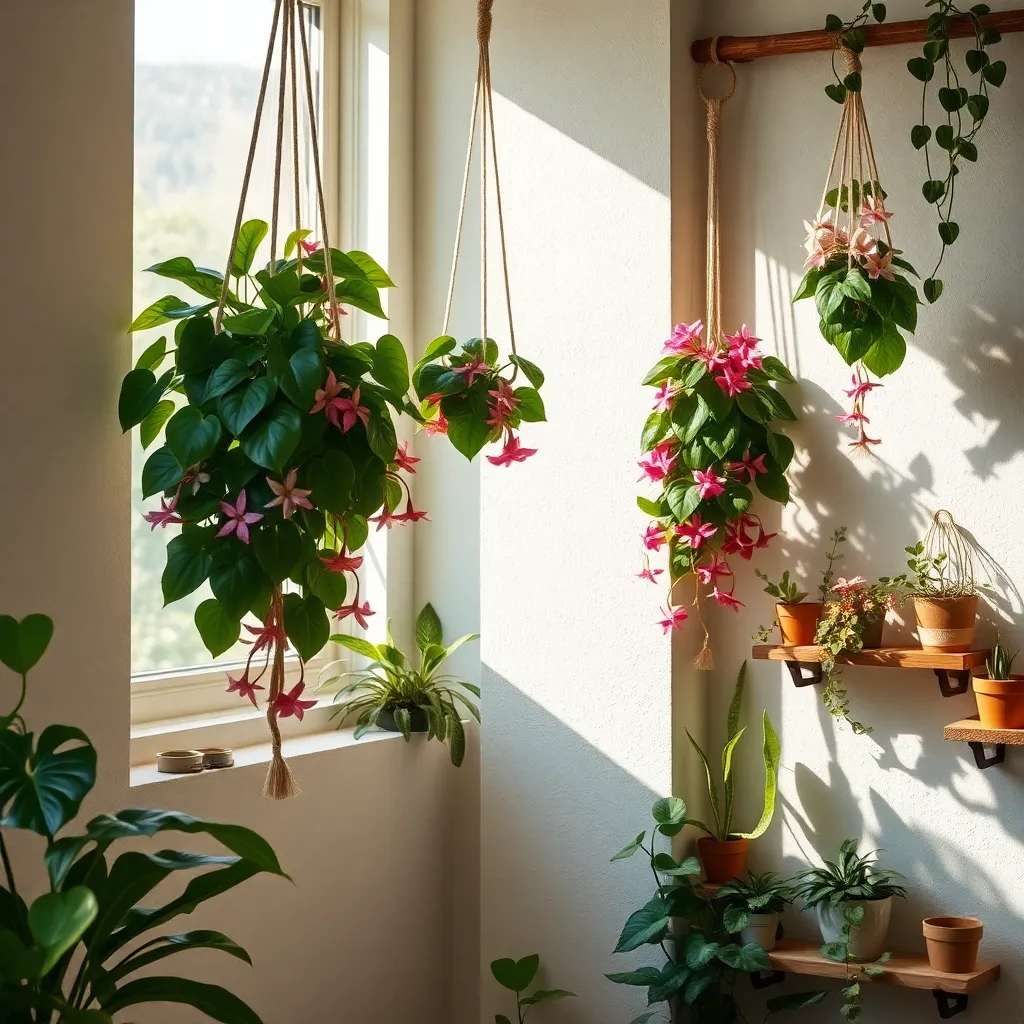
Hoya plants, often referred to as “wax plants,” are a delightful addition to any hanging garden. Their thick, waxy leaves and clusters of star-shaped flowers make them both visually appealing and easy to care for, making them perfect for beginners.
For optimal growth, place your Hoya in a spot that receives bright, indirect light. Direct sunlight can scorch the leaves, so it’s crucial to find a balance, especially if you’re placing them near a window.
When it comes to watering, Hoyas prefer to dry out between waterings. Water thoroughly once the top inch of soil feels dry, typically every 1-2 weeks depending on your home’s humidity levels.
Using a well-draining potting mix is essential for these plants. A mix of peat, perlite, and orchid bark can provide the perfect balance of drainage and moisture retention.
For those looking to go the extra mile, consider giving your Hoya a diluted liquid fertilizer every month during the growing season. This can encourage more blooms and healthier foliage, rewarding you with its signature fragrant flowers.
The Beauty of Burro’s Tail
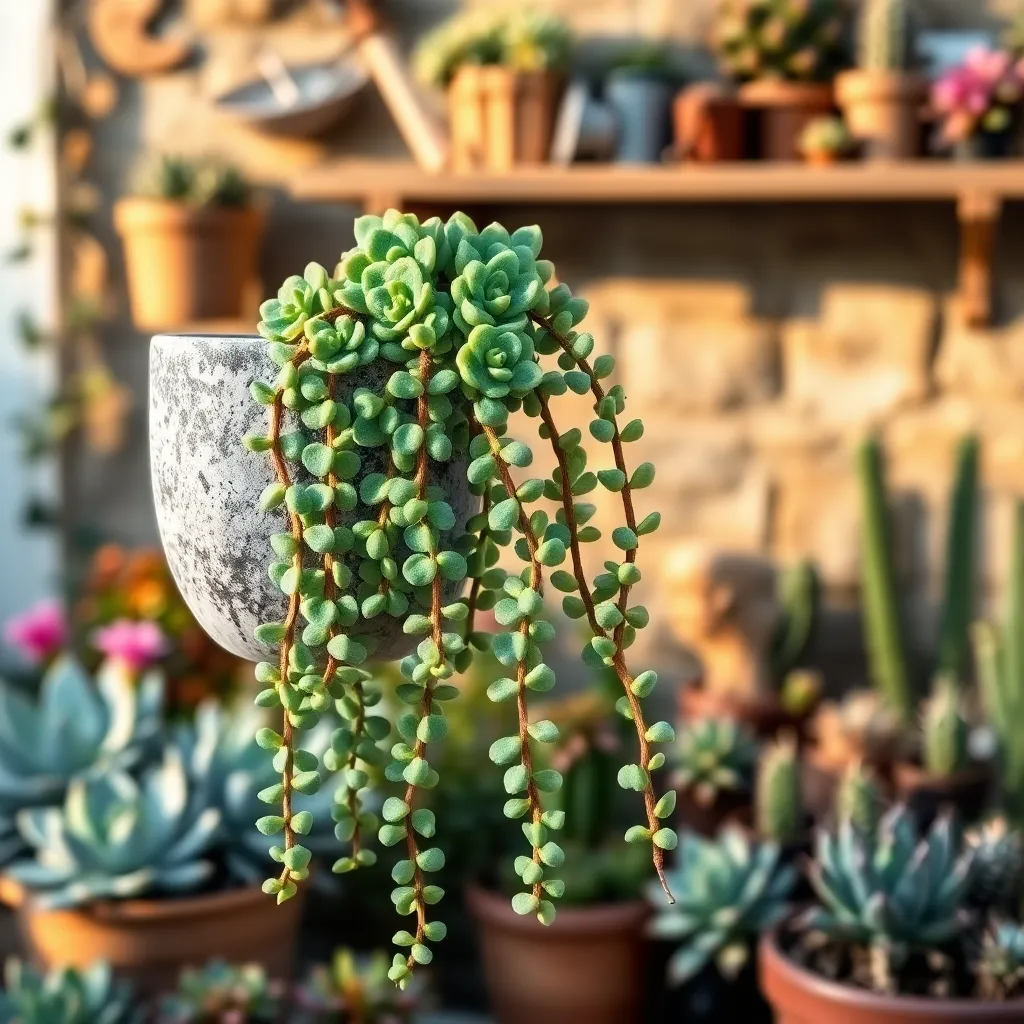
Burro’s Tail, also known as Sedum morganianum, is a stunning succulent that cascades gracefully, making it a popular choice for hanging baskets. Its unique appearance with trailing, fleshy leaves can add a touch of whimsy to any indoor garden.
To keep your Burro’s Tail thriving, ensure it receives ample bright, indirect light, as direct sunlight can scorch its delicate leaves. A south or east-facing window is ideal, offering the right balance of light and warmth without the risk of sunburn.
When it comes to watering, Burro’s Tail benefits from the “soak and dry” method. This means thoroughly watering the plant until water drains from the pot’s bottom, then allowing the soil to dry completely before the next watering.
For those looking for a more advanced challenge, consider propagating your Burro’s Tail by gently removing a few of its plump leaves and placing them on top of moist, well-draining soil. With a bit of patience, these leaves will develop roots and eventually grow into new plants, allowing you to expand your collection or share with friends.
Maidenhair Fern: Delicate Elegance

Among the most enchanting of hanging plants, the Maidenhair Fern offers a touch of delicate elegance to any space. Known for its feathery, fan-shaped fronds, this plant thrives in environments that mimic its natural habitat of shaded, moist forests.
To successfully grow a Maidenhair Fern, ensure it receives indirect light, as direct sunlight can scorch its sensitive leaves. Keep the soil consistently moist by watering regularly, but avoid waterlogging, which can lead to root rot.
Using a potting mix that retains moisture yet drains well, such as a blend of peat moss and perlite, provides the ideal growing medium. For beginners, it’s crucial to monitor humidity levels, as these ferns favor high humidity environments; consider placing a humidifier nearby or misting the leaves daily.
More experienced gardeners can experiment with propagation through spores or division, although patience is required. Regularly trimming spent or damaged fronds encourages new growth and maintains the plant’s lush appearance, ensuring your Maidenhair Fern remains a standout feature in your collection.
Senecio Rowleyanus: A Unique Find

Senecio Rowleyanus, more commonly known as the String of Pearls, offers a truly unique appearance with its cascading strands of spherical leaves. This plant is a standout choice for hanging baskets, bringing a touch of whimsy to any indoor or outdoor space.
For optimal growth, place your String of Pearls in a location that receives bright, indirect sunlight. Direct sunlight can scorch the delicate leaves, while too little light may cause the strands to become sparse and leggy.
Watering requires a careful balance; allow the soil to dry out completely between waterings to prevent root rot. A well-draining succulent mix, or a blend of potting soil and sand, is ideal to ensure water does not linger at the roots.
While it is a relatively low-maintenance plant, providing an occasional diluted liquid fertilizer during the growing season can encourage fuller growth. Pruning is another useful technique; trim back any overgrown strands to promote a bushier appearance and to rejuvenate the plant.
Caring for Your Hanging Plants

Hanging plants can transform your space into a lush oasis, but they require specific care to thrive. Ensure your hanging plants receive adequate light, but be mindful of the specific needs of each species; for example, ferns prefer indirect light, while succulents thrive in bright, direct sunlight.
Watering hanging plants can be tricky, so it’s crucial to understand the moisture needs of your particular plant. Generally, most hanging plants benefit from a thorough watering when the top inch of soil feels dry, but be sure to allow excess water to drain completely to avoid root rot.
Proper soil is essential for the health of your hanging plants. Use a lightweight, well-draining potting mix to ensure roots have access to oxygen and prevent waterlogging; a mix specifically designed for container plants or one with added perlite or vermiculite works well.
Advanced gardeners might want to experiment with fertilizing strategies to encourage bushy growth and vibrant blooms. Applying a balanced liquid fertilizer every four to six weeks during the growing season can keep your hanging plants looking their best, but always follow the manufacturer’s instructions to avoid over-fertilization.
Mixing and Matching Varieties
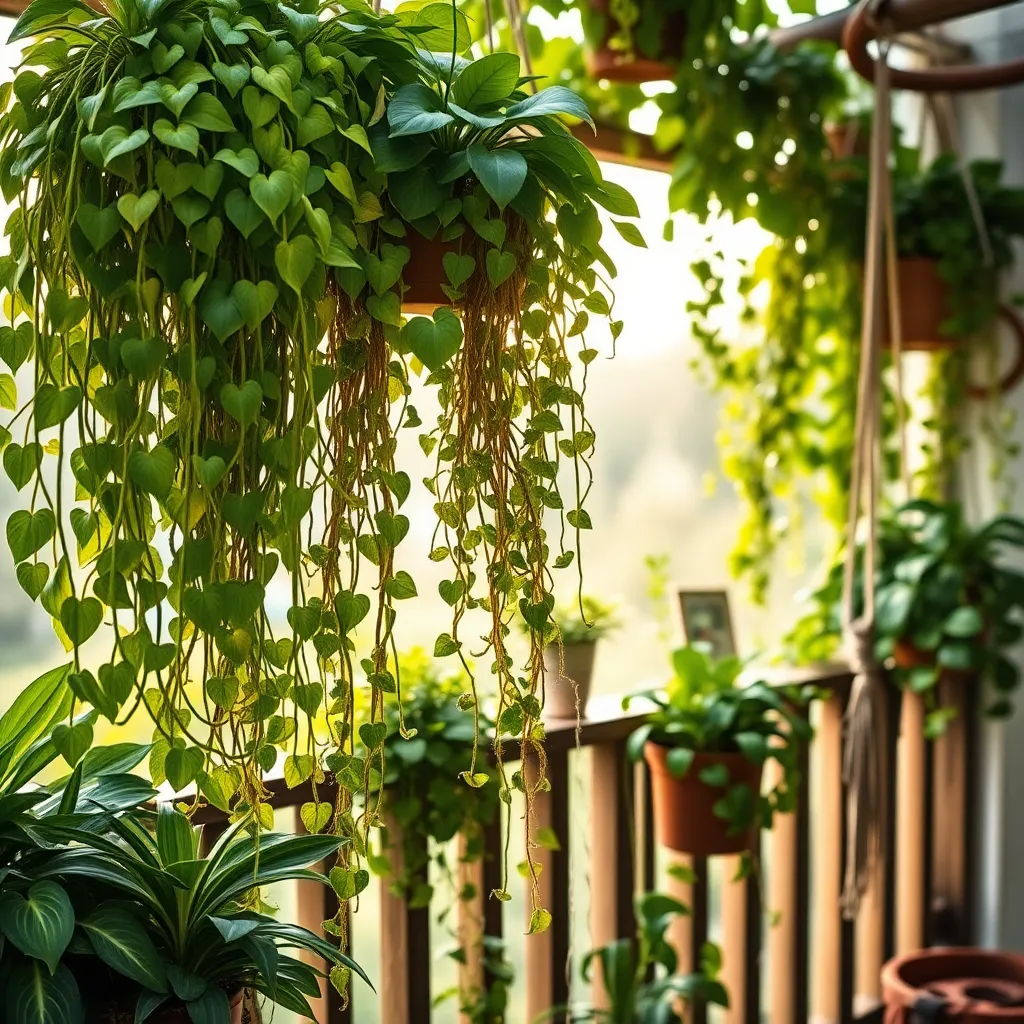
Combining different varieties of hanging plants can create a stunning visual display that adds depth and interest to your space. To achieve a balanced look, consider plants with varying textures and colors, such as pairing delicate ferns with bold, trailing ivies.
When selecting plants to mix, ensure that they share similar light and water requirements to thrive together in the same environment. For example, both spider plants and pothos do well in indirect light and prefer their soil to dry out slightly between waterings.
Experimenting with different pot sizes and styles can also enhance the aesthetic appeal of your hanging plant arrangement. Use lightweight containers with good drainage to prevent root rot, and consider using coco coir or sphagnum moss as a soil alternative for added moisture retention.
For advanced gardeners, incorporating seasonal plants into your mix can provide dynamic changes throughout the year. Consider swapping out summer-loving varieties like petunias with winter-hardy options such as Christmas cactus to maintain visual interest and plant health year-round.
Create Pinterest-Worthy Plant Displays
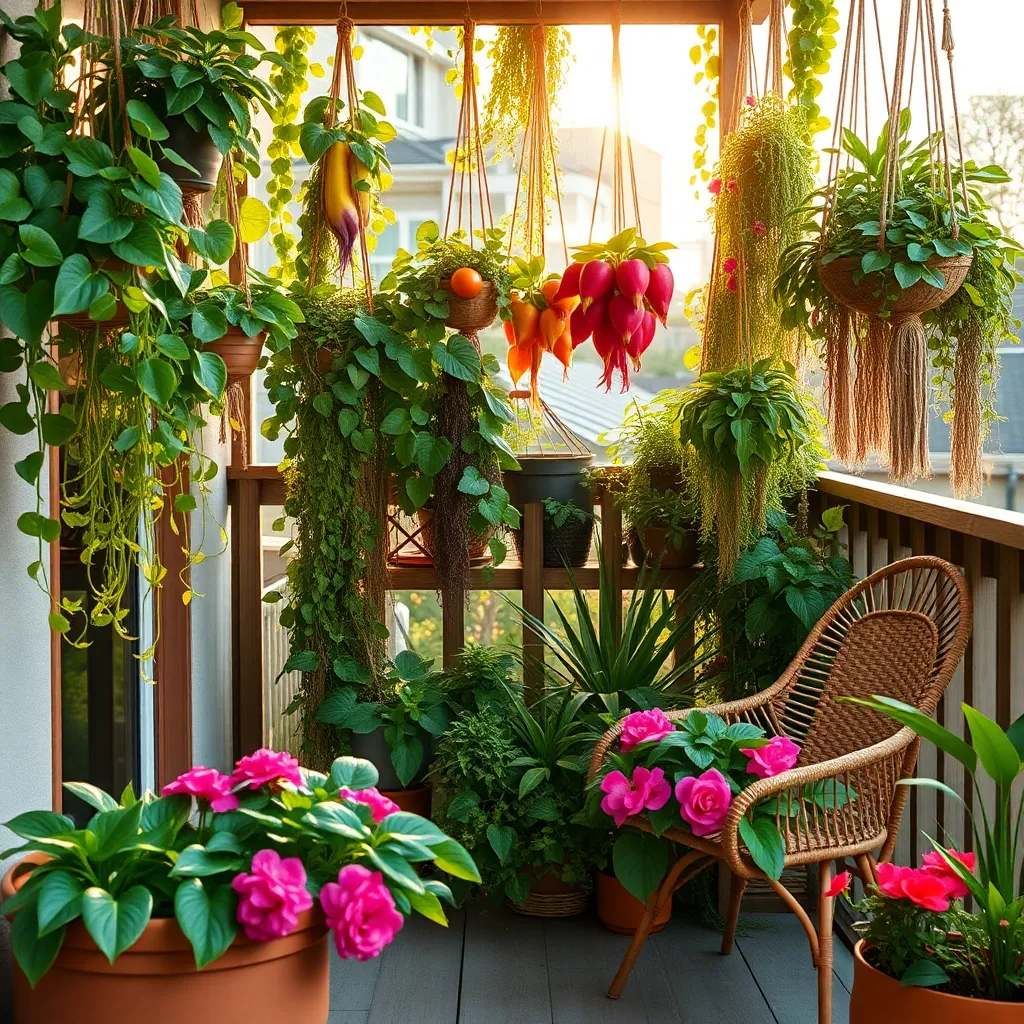
Creating a Pinterest-worthy plant display starts with choosing the right containers and hanging structures. Opt for decorative pots and sturdy macramé hangers that complement your home décor while providing adequate support for your plants.
To keep your display thriving, ensure each plant receives the proper amount of sunlight and water. Position your hanging plants in locations where they can bask in natural light, and water them when the top inch of soil feels dry.
Soil type plays a crucial role in the health of your hanging plants. Use a lightweight, well-draining potting mix, such as one formulated for indoor plants or succulents, to prevent root rot and promote healthy growth.
Consider incorporating a variety of plant sizes and textures to create visual interest in your display. Mix trailing plants like pothos or string of pearls with upright varieties like spider plants or ferns for a dynamic look.
For an advanced touch, try layering plants at different heights to create depth and showcase each plant’s unique features. Use adjustable hangers or tiered plant stands to achieve this effect, ensuring that lower plants still receive adequate light.
Conclusion: Growing Success with These Plants
As we explored the vibrant world of Pinterest’s trending hanging plants, we delved into 16 key concepts that mirror essential aspects of nurturing relationships. From the resilience of the Pothos and the adaptability of the Spider Plant to the enduring beauty of the Boston Fern and the supportive nature of the String of Pearls, each plant highlighted a valuable lesson in communication, patience, support, and growth. By integrating these insights into daily interactions, relationships can thrive much like these verdant beauties.
To put these lessons into action, choose one plant that resonates with your current relationship dynamic and reflect on how its characteristics can inspire positive change. Perhaps you’ll foster resilience like the Pothos or embrace adaptability akin to the Spider Plant.
Remember, relationship success is a journey, not a destination. Bookmark this article to revisit these concepts and continuously cultivate a thriving partnership. As you apply these green-thumbed lessons, you’ll not only enhance your relationship today but also sow the seeds for a flourishing future together. Save this article as your go-to guide for relationship growth, and step confidently into a world where love blooms and thrives.

